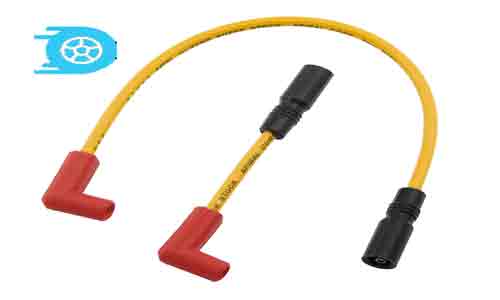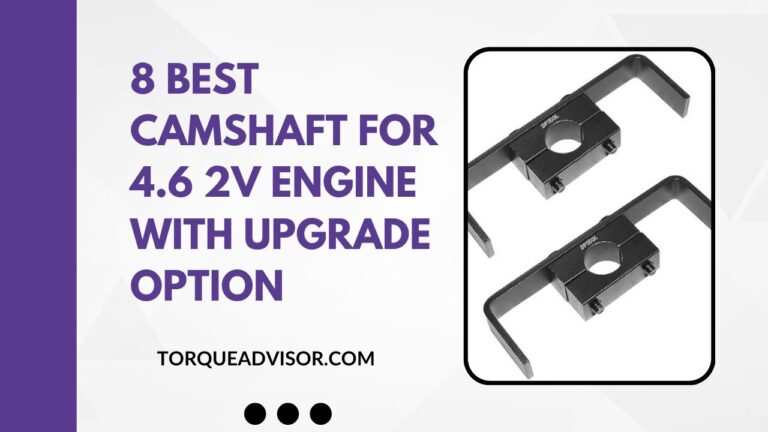4.6 Ford Engine: Power, Spec, Problems & Review

The 4.6L engine has been featured in a range of models, including the Ford Mustang, F-150, Crown Victoria, and many others.
This 281 cubic inch V8 wasn’t just a lump of metal; it was a symbol of power, reliability, and versatility.
Born in 1991, the 4.6L started with a humble 2-valve SOHC configuration, churning out 190 horsepower. But its potential was quickly recognized. Over the years, it evolved, sporting 3-valve SOHC and even 4-valve DOHC setups, pushing power figures past the 400 mark in Mustangs like the Shelby GT500.
With a dual overhead camshaft (DOHC) design, the engine achieves a balance between power and efficiency. Its displacement, combined with advanced features like variable valve timing (VVT), has contributed to its ability to deliver both ample low-end torque and robust high-end power.
Beyond raw muscle, the 4.6L offered impressive refinement and fuel efficiency. Its aluminum construction kept weight down, while features like variable camshaft timing (VCT) optimized performance across the rev range. This adaptability made it a perfect fit for everything from sporty Mustangs to rugged trucks like the F-150.
The 4.6L wasn’t without its flaws, with some versions susceptible to spark plug and oil leak issues. But regular maintenance and a robust aftermarket ensured its longevity. Many engines reached well over 200,000 miles with proper care, a testament to its inherent durability.
4.6 Ford Engine Specs
Here’s a table summarizing the specifications of the 4.6 Ford engine:
| Specification | Details |
| Displacement | (4.6 L; 280.8 cu in) 4,601 cc |
| Bore and Stroke | (90.2 mm × 90.0 mm) 3.552 in × 3.543 in |
| Compression Ratio | 9.0:1 |
| Valves | 2, 3, or 4 per cylinder |
| Power | 300 horsepower |
| Torque | 320-foot pounds |
| Fuel | 87 octane |
4.6 Ford Engine Horsepower
The 4.6 Ford engine offers horsepower ranging from 215 HP to 390 HP, showcasing a diverse power output suitable for various vehicle applications and performance needs.
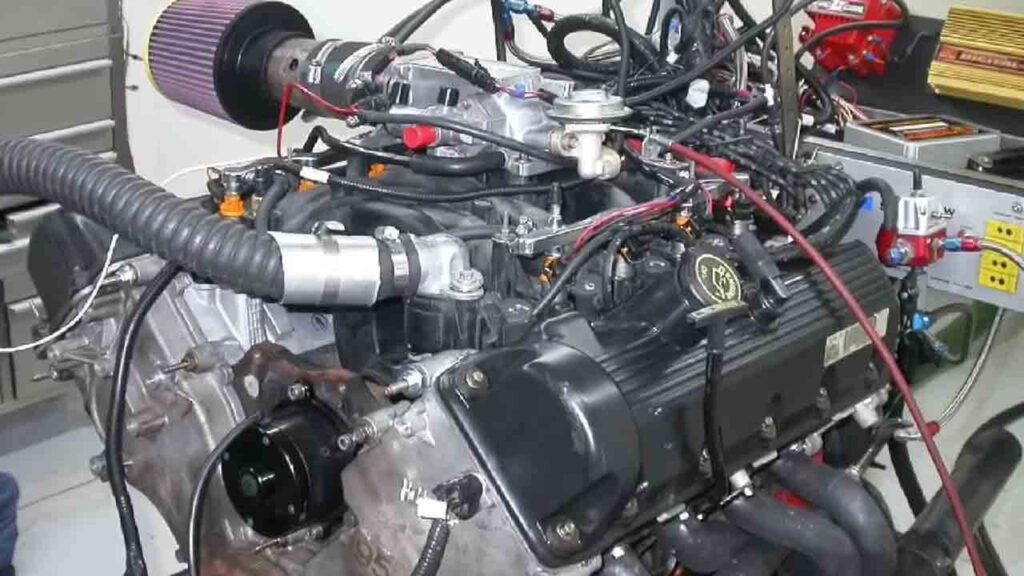
Best 4.6 Ford Engine
The 4.6L 4V engine was designed for higher performance compared to its 2-valve counterparts. It featured four valves per cylinder (two intake and two exhaust), allowing for improved airflow and combustion efficiency.
1.The Screaming 4-Valve:
- Image of Ford 4.6L 4-valve engine
- Strengths: Unleashes the beast within, especially in Mustangs like the SVT Cobra and Mach 1. Breaths freely at high revs, delivering exhilarating bursts of power.
- Weaknesses: Fuel efficiency takes a hit, and the complex valvetrain setup translates to potentially higher repair costs.
2. The Balanced 3-Valve:
- Image of Ford 4.6L 3-valve engine
- Strengths: Offers a sweet spot between low-end torque and high-end power. More efficient than the 2-valve and delivers a noticeable power boost, making it a well-rounded choice for sedans like the Taurus and Mustangs.
- Weaknesses: Slightly more complex than the 2-valve, potentially leading to higher maintenance costs.
3.The Mighty 2-Valve:
- Image of Ford 4.6L 2-valve engine
- Strengths: Renowned for its exceptional low-end torque and pulling power, making it ideal for trucks like the F-150 and SUVs like the Expedition.
- Weaknesses: Simpler design translates to less horsepower compared to its 3 and 4-valve counterparts. Higher revs can leave it feeling breathless.
- Best for: Towing, hauling, everyday driving where fuel efficiency and grunt are valued over high-octane thrills.
4.6 Ford Engine Cubic Inch
The 4.6 Ford engine has a displacement of 280.8 cubic inches. This cubic inch measurement represents the total volume displaced by all the engine’s cylinders during operation.
Are All Ford 4.6 Engines The Same?
No, not all Ford 4.6 engines are the same. Variations exist based on design, performance, and application. Different models and years may have unique specifications and features.
How Many Miles Will A 4.6 Ford Engine Last?
A 4.6 Ford engine can potentially last up to 300,000 miles with proper maintenance and care. Regular servicing and attention to engine health are crucial.
4.6 Mustang Engine
The 4.6-liter V8 engine was a prominent powerplant in the Ford Mustang lineup. Known for its performance and versatility, it powered various Mustang models from the mid-1990s to the late 2000s, offering a blend of power and efficiency.
4.6 Ford Engine Firing Order
The firing order for the 4.6 Ford engine is 1-3-7-2-6-5-4-8. This sequence dictates the order in which the engine’s cylinders ignite, ensuring smooth operation and optimal performance.
Is The Ford 4.6 Engine Good?
The Ford 4.6 engine is a reliable and widely-used powerplant in various Ford vehicles. Known for its durability and decent performance, it has been a staple in the automotive industry, though newer engine technologies have surpassed it in efficiency.
How Much Horsepower Is In A 4.6 V8?
A 4.6 V8 engine can range from 215 to 390 horsepower, depending on the specific configuration and model. This variation offers a diverse performance range suitable for various automotive applications.
Is The Toyota 4.6 V8 A Good Engine?
The Toyota 4.6 V8 is known for its reliability, smooth performance, and efficiency. It offers a balance of power and fuel economy, making it a respected choice for various applications.
What Are The Most Common Problems In A 4.6 Ford Engine?
Here are some of the most common problems associated with the 4.6 Ford engine:
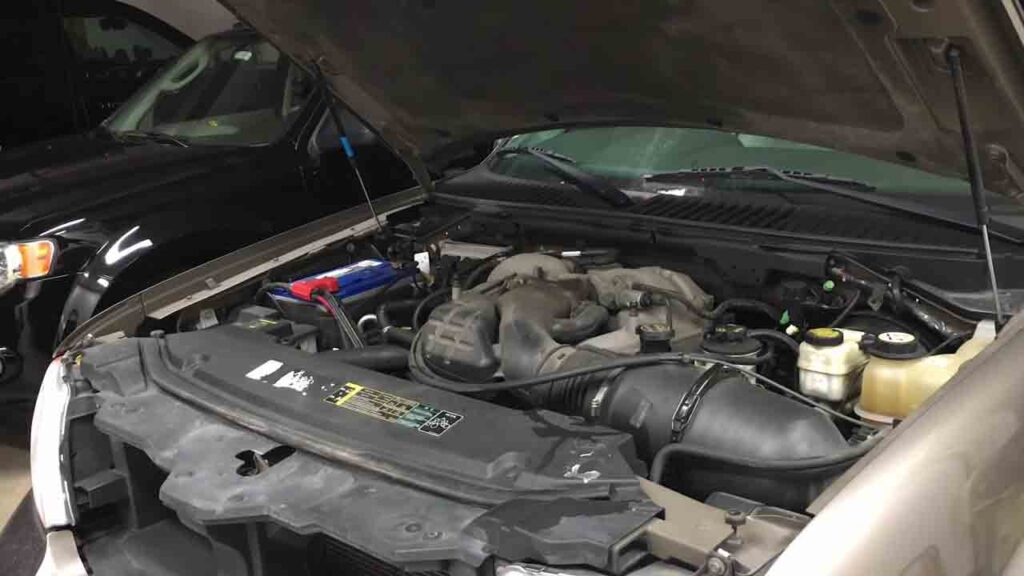
Read More About Battle Of The Pistons: 2 Valve Vs 3 Valve Engines Explained
1. Intake Manifold Runner Control (IMRC) Issues
The IMRC system uses butterfly valves in the intake manifold to optimize airflow at different RPMs. Over time, these can become clogged or fail, leading to drivability issues.
2. Cam Phaser Noise
The cam phasers are responsible for adjusting camshaft timing for improved performance and efficiency. Some 4.6 engines have experienced a characteristic “rattling” or “ticking” noise from the cam phasers, especially at startup.
3. Timing Chain Tensioner and Guide Wear
Over time, the timing chain tensioners and guides can wear out, leading to noisy operation, reduced performance, or even catastrophic engine damage if not addressed.
4. Coolant Leaks
Like many engines, the 4.6 can develop coolant leaks over time. Common areas for leaks include the intake manifold gaskets, thermostat housing, and water pump.
5. Spark Plug Blowout
In some applications, especially the 2-valve version of the 4.6, spark plugs can become loose and blow out of the cylinder head. This can be a result of improper torque during installation or thread wear.
6. Oil Consumption
Some 4.6 engines may consume oil more rapidly than expected, which can lead to reduced engine longevity if not monitored and addressed.
7. Carbon Buildup
Over time, carbon deposits can accumulate on the intake valves and combustion chambers, affecting performance and fuel economy. Regular maintenance and occasional cleaning can help mitigate this issue.
8. Fuel Injector Problems
Faulty fuel injectors can cause a variety of issues, including rough idle, poor fuel economy, and reduced performance.
9. Cylinder Head Cracking
In rare instances, the aluminum cylinder heads on the 4.6 engine can develop cracks, especially under high-stress conditions or if the engine has been overheated.
10. Transmission Issues
While not exclusive to the 4.6 engine, some vehicles equipped with this engine may experience transmission problems, such as slipping, harsh shifts, or premature failure.
Read Also What Is The Difference Between TPMS Relearn And Program?
How Long Do 4.6 Motors Last?
The longevity of 4.6 motors can vary based on maintenance and usage. Generally, they can last up to 26 years or achieve approximately 300,000 miles if well-maintained. Regular servicing and care are essential for maximizing their lifespan.
Is The 4.6 Engine Reliable?
The 4.6 engine is generally considered reliable when properly maintained. However, like any engine, its reliability can be influenced by maintenance, driving habits, and other factors. Regular servicing and care are essential for optimal performance and longevity.
Who Made The Ford 4.6 Engine?
The Ford 4.6 engine was produced by Teksid S.p.A, a subsidiary of Fiat. This engine, known for its performance and reliability, powered various Ford vehicles, including the Mustang and F-150, during its production.
Is The Ford 4.6 A V6 Or V8?
The Ford 4.6L engine is a V8, not a V6. It’s part of Ford’s Modular engine family, commonly used in various Ford vehicles. The 4.6L V8 engine has been employed in different models, including the Ford Mustang, F-150, Crown Victoria, and others.
Known for its durability and performance, the 4.6L V8 is distinct from Ford’s V6 engines, offering more power and torque for applications requiring greater performance capabilities.
Is The Ford 4.6 A Small Block?
Yes, the Ford 4.6-liter V8 is classified as a small-block engine due to its compact design and architecture, which distinguish it from larger, big-block engines.
What Is The Problem With The 4.6 Intake Manifold?
The 4.6-liter Ford V8 intake manifold, particularly from the 1996-2001 models, had issues with its composite construction. Over time, the plastic material could develop cracks, leading to coolant leaks.
This not only caused potential engine overheating but also posed a risk to other components. Many owners replaced these with aftermarket aluminum versions for increased durability and reliability.
Is The Ford 4.6 A 3 Valve Engine?
Yes, the Ford 4.6 is a 3-valve SOHC (Single Overhead Cam) engine.
Read More About 9 Best Aftermarket TPMS Sensors For Any Budget & To Enhance Tire Safety
What Is The Difference Between The 4.6 And 5.4 Ford?
Here are some of the key differences:
1. Displacement
4.6-liter: This engine has a displacement of 4.6 liters (281 cubic inches). It’s available in different configurations, including both V8 and V10 variants.
5.4-liter: The 5.4-liter engine has a displacement of 5.4 liters (330 cubic inches). It’s also available in V8 configurations.
2. Performance
4.6-liter: Generally, the 4.6-liter engine offers lower power and torque outputs compared to the 5.4-liter engine.
5.4-liter: The 5.4-liter engine typically produces higher power and torque compared to the 4.6-liter variant. It’s often used in applications where greater towing capacity or performance is required.
3. Applications
4.6-liter: This engine has been used in various Ford vehicles, including the Mustang, Crown Victoria, and F-150, among others.
5.4-liter: The 5.4-liter engine has been utilized in a range of Ford trucks and SUVs, such as the F-150, Expedition, and F-Series Super Duty, due to its higher torque and towing capabilities.
4. Fuel Efficiency and Emissions
Generally, the 4.6-liter engine may offer slightly better fuel efficiency in some applications due to its smaller displacement. However, advancements in technology and design over the years have improved the efficiency of both
How Do I Identify A Ford 4.6 Engine?
Here are some general steps and features to help you identify a Ford 4.6 engine:
1. Displacement Markings
The “4.6L” or “4.6” marking on the engine block is the most straightforward indicator of the engine’s displacement.
2. Intake Manifold
The intake manifold design can sometimes offer clues. For example, the early SOHC (Single Overhead Cam) versions might have a different intake manifold design compared to the later DOHC (Dual Overhead Cam) versions.
3. Valve Covers
The valve covers might have markings or stickers indicating “4.6L” or specific trim levels like “Triton.”
4. Cylinder Heads
The DOHC version will have four camshafts (two per cylinder head), while the SOHC version will have just two camshafts.
Throttle Body: The size and design of the throttle body can vary depending on the specific application, but it’s another component you can inspect.
5. VIN (Vehicle Identification Number)
While not specific to the engine itself, the VIN can provide information about the vehicle, including its engine type. However, this method won’t tell you if the engine has been swapped.
6. Engine Code
There should be an alphanumeric engine code on the block. For instance, the 4.6L SOHC engine for some Mustangs might have a code like “Romeo” or “Windsor” indicating the engine plant where it was manufactured.
7. Timing Cover
The timing cover can sometimes have labels or markings that indicate the engine model or displacement.
4.6 Ford Engine For Sale
“4.6 Ford engine for sale on Amazon and eBay. High-quality, reliable performance. Perfect for replacements or upgrades. Limited stock is available. Don’t miss out! Buy now!”
How The 4.6 Ford Engine Complies With Emissions Regulations
Here are some general ways in which the 4.6L Ford engine has been designed to meet emissions standards:
Electronic Engine Management System: The engine is equipped with an advanced electronic engine management system that continuously monitors and adjusts various parameters, such as air-fuel mixture, ignition timing, and exhaust gas recirculation (EGR) rates, to optimize combustion and minimize emissions.
Catalytic Converters: The exhaust system includes catalytic converters that help reduce harmful emissions by converting pollutants such as carbon monoxide (CO), hydrocarbons (HC), and nitrogen oxides (NOx) into less harmful substances before they exit the tailpipe.
Oxygen Sensors: The engine is equipped with oxygen sensors that monitor the oxygen content in the exhaust gases. This information is used by the engine management system to adjust the air-fuel mixture in real-time, ensuring efficient combustion and minimizing emissions.
Exhaust Gas Recirculation (EGR) System: The EGR system recirculates a portion of the exhaust gases back into the combustion chamber to reduce the formation of NOx emissions. The engine management system controls the EGR valve to optimize its operation based on driving conditions and engine load.
Evaporative Emissions Control: The engine includes a system to capture and control evaporative emissions from the fuel system, preventing the release of harmful vapors into the atmosphere.
Thermal Management: The engine’s design may incorporate various thermal management strategies. For example, optimizing coolant flow and using thermal barriers, to improve combustion efficiency and reduce emissions during cold starts and warm-up periods.
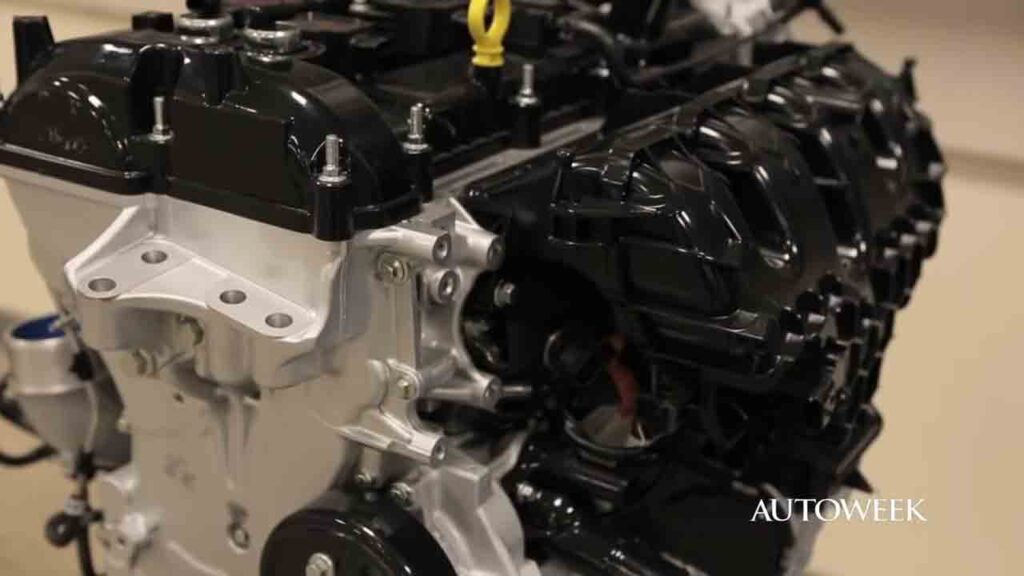
Comparison With Other Engines In Terms Of Performance
Here’s a general comparison:
1. Horsepower and Torque
The 4.6-liter Modular V8, especially in its later iterations like the 4-valve DOHC versions found in the Mustang Cobra, produced respectable horsepower figures ranging from approximately 220 to over 300 horsepower depending on the specific model and year.
2. Fuel Efficiency
The 4.6-liter engine’s fuel efficiency is decent for its time, but it may not match the efficiency of newer engines with advanced fuel-saving technologies like direct injection, variable valve timing, or cylinder deactivation.
3. Reliability
The 4.6-liter Modular V8 is generally considered reliable when properly maintained. Like any engine, its longevity and dependability depend on regular maintenance, driving conditions, and usage.
4. Aftermarket Support
The 4.6-liter Ford engine, particularly in its performance-oriented variants, has a significant aftermarket support network. This means there are plenty of aftermarket parts available, from performance upgrades to maintenance components.
5. Modularity and Versatility
One of the strengths of the 4.6-liter Modular V8 is its modularity, allowing it to be adapted for various applications and configurations. This versatility has contributed to its widespread use across Ford’s lineup.
How to Build Max-Performance 4.6-Liter Ford Engines
Here’s a general guide to building a high-performance 4.6-liter Ford engine:
6. Engine Block Preparation
Bore and Hone: Ensure the cylinders are bored and honed to the correct size. This might involve overboring the block slightly if you’re going for a high-performance rebuild.
Deck Surfacing: Mill the block deck to ensure a perfectly flat surface for the cylinder heads.
Strengthening: Consider aftermarket girdles or main studs for added strength, especially if you’re planning high RPM or forced induction.
7. Cylinder Heads
Porting and Polishing: If budget allows, consider professional porting and polishing of the cylinder heads for improved airflow.
Valves and Springs: Upgrade to performance valves and springs. This ensures better flow and durability at high RPMs.
8. Camshaft and Timing
Performance Camshaft: Select a camshaft that matches your performance goals. This will dictate your engine’s powerband and characteristics.
Valve Train: Ensure the valve train components (lifters, pushrods, rockers) are matched and capable of handling the camshaft’s specs.
9. Intake and Exhaust
High-Flow Intake Manifold: Upgrade to a performance intake manifold to improve airflow into the engine.
Performance Exhaust: A free-flowing exhaust system (headers, mid-pipe, mufflers) can significantly improve performance.
10. Fuel System
Upgraded Injectors: For higher performance, you’ll likely need larger fuel injectors.
Upgraded Fuel Pump: Ensure the fuel pump can supply the required volume of fuel for your performance goals.
11. Cooling System
Upgraded Radiator: A high-performance engine will generate more heat. Consider upgrading to a larger or more efficient radiator.
Cooling Fans: Ensure you have adequate cooling fans to keep the engine temperature in check, especially during high-performance driving.
12. Ignition System
Upgraded Coils and Wires: A stronger spark can improve combustion and performance. Consider upgrading the ignition coils and spark plug wires.
Tuning: Use a performance tuner or ECU reflash to optimize ignition timing and fuel curves for max performance.
FAQs
What was Ford’s 4.6 engine called?
Ford’s 4.6 engine was part of the Modular engine family. The Modular engine platform included various displacement versions, and the 4.6-liter variant was commonly used in vehicles like the Ford Mustang and F-Series trucks.
What year did Ford stop using the 4.6 engine?
Ford stopped using the 4.6 engine in 2014.
What kind of oil does a 4.6 Ford take?
A 4.6 Ford engine typically uses 5W-20 synthetic blend motor oil.
What kind of oil does a 1997 Ford 4.6 take?
A 1997 Ford 4.6 typically uses 5W-20 oil.
Conclusion
The 4.6 Ford engine stands as a testament to Ford’s commitment to producing reliable, versatile, and powerful engines for a diverse range of vehicles. This engine has powered iconic models like the Ford Mustang and F-150, leaving an indelible mark on the automotive world. Its specifications, ranging from horsepower to displacement, have evolved, adapting to the demands of drivers and advancements in technology.
Yet, its enduring popularity and widespread use underline its overall reliability and performance capabilities when properly maintained.



